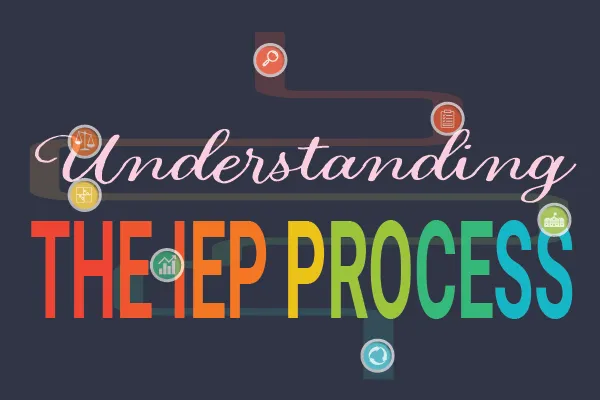
Understanding The IEP Process
"In special education, there's too much emphasis placed on the deficit and not enough on the strength." - Temple Grandin
Introduction:
Introduction: As a parent, navigating the education system can sometimes be challenging, especially when your child has special needs. Understanding the Individualized Education Program (IEP) process is crucial to ensuring your child receives the support they need to succeed. In this comprehensive guide, we will break down the IEP process in simple terms, empowering you to advocate for your child's education and make informed decisions.

Step 1: Referral and Child Find: If you suspect your child may have a disability that affects their learning, you can request an evaluation through a process known as "Child Find." This step helps identify children who may require special education services. Your child's local public school is responsible for locating and evaluating children, regardless of their educational setting. They may begin with intervention programs like Response to Intervention (RTI), but you have the right to request an evaluation at any time.
Step 2: Initial Evaluation: Once you request an evaluation, the school has a limited timeframe, usually around 60 days, to conduct the initial assessment. This evaluation assesses various aspects of your child's abilities, including academics, functional skills, and development. The results determine if your child is eligible for special education services.
Step 3: Determining Eligibility: During this step, the evaluation results are reviewed to determine if your child has a disability that significantly affects their academic, functional, or developmental performance. If they meet the eligibility criteria, they become eligible for special education services tailored to their specific needs.
Step 4: Developing the IEP: The IEP team, consisting of key individuals, comes together to develop an Individualized Education Program (IEP) for your child. The team typically includes:
Parent(s): As the primary advocate for your child, you play a crucial role in the IEP team. Your insights into your child's strengths, challenges, and aspirations are essential.
General Education Teacher: If your child is or may participate in the general education environment, a general education teacher provides valuable input on how the disability affects your child's involvement in the general curriculum.
Special Education Teacher: This educator brings expertise in designing and implementing specially tailored instruction to meet your child's unique needs. They help ensure that the IEP goals are meaningful and aligned with your child's abilities.
School Representative: Usually a school staff member, such as a principal or vice-principal, this person is knowledgeable about the resources available at the school and can provide clarification on the general education curriculum.
Individual who can interpret evaluation results: Often filled by a school psychologist or other specialist, this individual interprets the evaluation results to determine the instructional implications for your child.
Other invited participants: You have the right to invite individuals with specialized knowledge or expertise about your child to the IEP meeting. This could include family members, friends, or professionals who can offer valuable insights.
Your Child (optional): Depending on their age and maturity, your child can participate in the IEP meeting, sharing their strengths, needs, and goals. Their involvement fosters self-advocacy and ensures their voice is heard.
Step 5: Implementation of the IEP: Once the IEP is developed, the school will provide the specified special education services and supports outlined in the plan. It's essential to ensure that the IEP is implemented as soon as possible, and your child receives the necessary assistance. Regular communication with the school is key to monitoring your child's progress and making any necessary adjustments.
Step 6: Annual Review: The IEP must be reviewed annually to evaluate your child's progress towards their goals. During this review, the IEP team assesses your child's current performance, determines if any adjustments are needed, and sets new goals for the upcoming year. This process ensures that your child's educational plan remains relevant and effective.
Step 7: Re-evaluation: Every few years, typically every three years, your child will undergo a re-evaluation to assess their continued eligibility for special education services. This assessment helps determine if any changes or adjustments are needed to meet your child's evolving needs.

Conclusion: Understanding the IEP process is crucial for advocating for your child's education and ensuring they receive the support they need to thrive. By familiarizing yourself with the steps involved and actively participating in the IEP meetings, you can help shape your child's educational journey. Remember, you are your child's strongest advocate, and your involvement is instrumental in creating an inclusive and supportive learning environment. Together, let's empower our children and pave the way for their success.